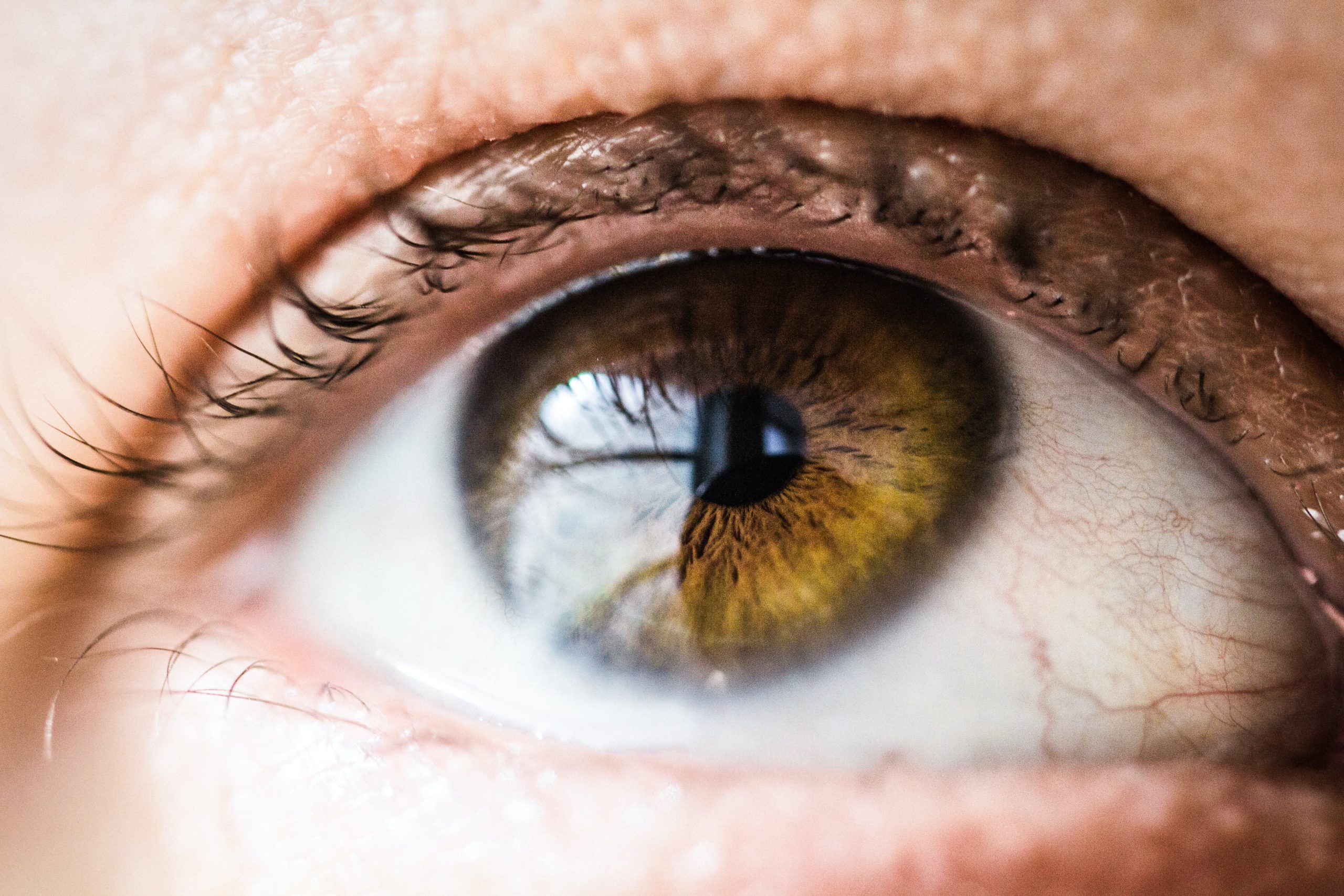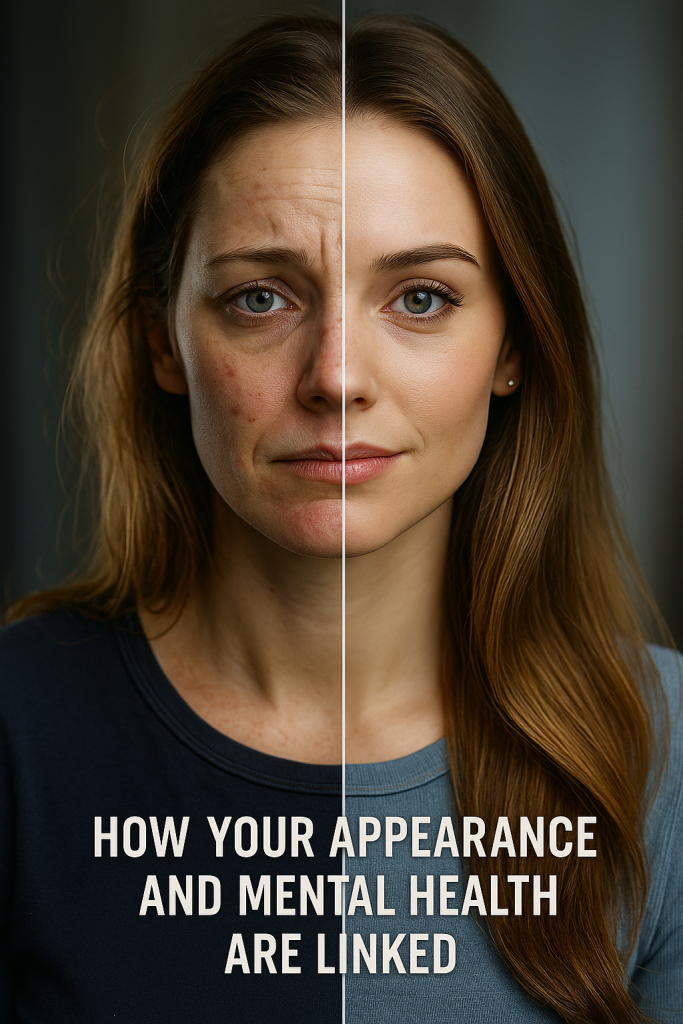Have you ever woken up to find your vision blurry, only for it to improve as the day goes on? What if I told you that this could be a symptom of Fuchs dystrophy? This genetic disease affects the cornea and can cause a rough or gritty feeling in your eye, discomfort in bright light, and halos and glare from bright lights. Don’t worry, though – understanding the symptoms, causes, and treatment options can help you manage this condition. In this article, we will explore everything you need to know about Fuchs dystrophy. From diagnosing the disease to exploring treatment options, we will guide you through the world of Fuchs dystrophy and help you preserve your vision.
Overview of Fuchs Dystrophy
In the overview of Fuchs Dystrophy, you will learn about the genetic disease that affects the cornea, causing deterioration of corneal cells and resulting in corneal edema. Fuchs dystrophy is a condition that typically manifests in middle age or later and is characterized by blurred vision, especially in the morning. The disease progresses gradually, leading to the buildup of excess fluid in the cornea and subsequent blurry vision. When it comes to treatment options for Fuchs dystrophy, there are both surgical interventions and nonsurgical solutions available. Nonsurgical solutions include the use of eyedrops or eye ointment to manage the early stages of the disease. However, it is important to note that these treatments cannot reverse the condition. In cases where the disease advances and impairs regular activities, ophthalmologists may recommend surgical interventions such as corneal transplant surgery. This specific form of surgery, known as endothelial keratoplasty, is used to replace the damaged cornea with a healthy one. Ultimately, the recommended treatment plan for Fuchs dystrophy is determined through a thorough evaluation by an ophthalmologist.
Symptoms of Fuchs Dystrophy
If you are experiencing eye pain or discomfort, sensitivity to light and glare, seeing colored halos around lights, or worsening vision throughout the day, these may be symptoms of Fuchs Dystrophy. Eye pain can be a result of the corneal edema caused by the disease, while sensitivity to light and glare can occur due to the changes in the cornea. Seeing colored halos around lights is another common symptom, and worsening vision throughout the day can be indicative of the deterioration of corneal cells.
Eye pain
Experiencing eye pain is a common symptom of Fuchs Dystrophy. When you have Fuchs Dystrophy, you may encounter eye pain along with other symptoms. Here are some important points to consider about eye pain and Fuchs Dystrophy:
- Eye pain in Fuchs Dystrophy can range from mild discomfort to severe pain.
- Treatment options for managing discomfort and relieving eye pain include medications, such as eye drops or ointments, that can temporarily reduce swelling and dry up excess fluid in the cornea.
- Coping strategies and pain management techniques, such as using warm air to dry up fluid or wearing glasses with photochromic lenses for light sensitivity, can help alleviate eye pain.
- In advanced stages of Fuchs Dystrophy, surgical interventions like corneal transplant surgery may be recommended to improve vision and reduce eye pain.
Eye sensitivity to light and glare
You may frequently experience eye sensitivity to light and glare if you have Fuchs Dystrophy. This sensitivity can make it challenging to be in brightly lit environments or to be exposed to direct sunlight. To manage light sensitivity, it is important to take steps to reduce glare. This can be done by wearing sunglasses with polarized lenses, using tinted lenses or filters on electronic devices, and using blinds or curtains to control the amount of light entering a room. Regular eye exams are crucial for monitoring the progression of Fuchs Dystrophy and to discuss any concerns related to light sensitivity. Additionally, coping strategies such as wearing a hat or visor, using artificial tears to lubricate the eyes, and avoiding bright lights or harsh lighting conditions can help alleviate discomfort. It is important to understand that eye sensitivity to light and glare can impact daily activities, so finding effective coping mechanisms is essential.
Seeing colored halos around lights
One of the symptoms of Fuchs Dystrophy is the presence of colored halos around lights. These halos can have a significant impact on your daily life, affecting your ability to see clearly and causing discomfort in bright light. Here are some important points to consider about this symptom:
- Causes of halos: The colored halos around lights are caused by the buildup of excess fluid in the cornea, which is a characteristic of Fuchs Dystrophy. This fluid buildup can distort the way light enters the eye, resulting in the appearance of halos around lights.
- Treatment options for halos: Currently, there is no specific treatment for halos associated with Fuchs Dystrophy. However, managing the underlying condition through treatments like eyedrops, ointments, and, in advanced cases, corneal transplant surgery, may help alleviate the symptoms including the halos.
- Impact of halos on daily life: The presence of colored halos around lights can make everyday tasks such as driving, reading, and working challenging. It can affect your depth perception and make it difficult to see objects clearly, especially in low-light conditions.
- Prevention strategies for halos: Since Fuchs Dystrophy is a genetic condition, there are no known prevention strategies for halos specifically. However, managing the overall health of your eyes by avoiding smoking, protecting your eyes from UV light, and maintaining stable blood sugar levels if you have diabetes, may help slow down the progression of the disease and potentially reduce the severity of halos.
- Research on halos and Fuchs dystrophy: Ongoing research is being conducted to better understand the causes of halos in Fuchs Dystrophy and to develop more effective treatments. Researchers are exploring various treatment options, such as medications to reduce fluid buildup and innovative surgical techniques, to improve the management of this symptom and enhance the quality of life for individuals with Fuchs Dystrophy.
Worsening vision throughout the day
As the day progresses, your vision with Fuchs Dystrophy may gradually deteriorate. This progressive deterioration can lead to significant visual impairment and impact your daily activities. One of the main symptoms of Fuchs Dystrophy is worsening vision throughout the day. You may notice that your eyesight becomes blurrier and less clear as the day goes on. This can make it difficult to perform tasks that require good vision, such as reading, driving, or even recognizing faces. It is important to seek treatment options for Fuchs Dystrophy to help manage and slow down the progression of the disease. Your healthcare provider may recommend non-surgical solutions like eyedrops or eye ointment in the early stages, and in more advanced cases, surgical interventions such as corneal transplant surgery may be necessary.
Diagnosis of Fuchs Dystrophy
To diagnose Fuchs Dystrophy, an ophthalmologist will perform specific eye exams and tests to evaluate the severity of the disease. These tests include:
- Pachymetry: This painless test measures corneal thickness using a special instrument called a pachymeter. A thinner cornea may indicate Fuchs Dystrophy.
- Confocal microscopy: This imaging technique allows for the visualization of the corneal endothelium, which is the innermost layer of the cornea. It helps assess the number, density, and shape of the cells, providing valuable information for diagnosing Fuchs Dystrophy.
- Slit lamp examination: This examination uses a microscope with a slit-shaped light source to examine the structures of the eye in detail. It can reveal characteristic changes in the cornea associated with Fuchs Dystrophy.
- Endothelial keratoplasty: This is a specific form of corneal transplant surgery that can be performed to treat advanced cases of Fuchs Dystrophy. It involves replacing the damaged corneal endothelium with healthy donor tissue.
- Elective laser vision correction: It is important to note that individuals with Fuchs Dystrophy are advised against undergoing elective laser vision correction procedures due to the weakened condition of the cornea.
Treatment of Fuchs Dystrophy
Treatment options for Fuchs Dystrophy revolve around managing symptoms and may include medication, surgery, and self-care measures. Nonsurgical solutions such as eyedrops or eye ointment can be used to treat early stages of Fuchs Dystrophy. These medications can temporarily reduce swelling and dry up excess fluid in the cornea, helping to alleviate symptoms like blurry vision and discomfort. However, it’s important to note that current therapies cannot reverse the disease.
In more advanced cases where the disease significantly impairs vision and daily activities, surgical interventions may be recommended. One common surgical procedure for Fuchs Dystrophy is a corneal transplant, specifically endothelial keratoplasty. During this procedure, the damaged endothelial cells of the cornea are replaced with healthy donor cells to restore normal corneal function.
Treatment plans for Fuchs Dystrophy are individualized based on a thorough evaluation by an ophthalmologist. They will assess the severity of the disease and recommend the most appropriate course of action. This may involve a combination of medication, surgery, and self-care measures to effectively manage symptoms and improve quality of life for individuals with Fuchs Dystrophy.
To provide a visual representation of the treatment options for Fuchs Dystrophy, here is a table:
| Treatment Options | Description |
|---|---|
| Eyedrops or ointment | Temporarily reduce swelling and dry up excess fluid in the cornea |
| Corneal transplant | Replace damaged endothelial cells with healthy donor cells |
| Self-care measures | Warm air to dry up fluid, wearing glasses with photochromic lenses for light sensitivity, etc. |
Remember to consult with a healthcare professional for an accurate diagnosis and personalized treatment plan for Fuchs Dystrophy.
Fuchs Dystrophy and Other Eye Conditions
Patients with Fuchs dystrophy may develop cataracts, which are a common occurrence in conjunction with this condition. When Fuchs dystrophy is mild or moderate and cataracts are present, cataract surgery may be recommended as a treatment option. Following cataract surgery, if the recovery is slow or limited, or if the Fuchs dystrophy condition worsens, a corneal transplant may be necessary. In advanced cases of Fuchs dystrophy, both cataract surgery and a corneal transplant may be recommended simultaneously to minimize overall recovery time. However, it is important to note that patients with Fuchs dystrophy are advised against undergoing elective laser vision correction due to the weakened condition of the cornea.
In addition to cataracts, Fuchs dystrophy can also be associated with other eye conditions. Researchers are currently studying the relationship between Fuchs dystrophy and glaucoma, as these two conditions can have overlapping signs and symptoms. Furthermore, individuals with Fuchs dystrophy may consider contact lenses as an alternative for vision correction. However, it is crucial to ensure proper fitting and follow-up with an eye care specialist. As for treatment advancements, ongoing research aims to improve the management and treatment of Fuchs dystrophy, providing hope for better outcomes in the future.
Background Information on Fuchs Dystrophy
Understanding Fuchs Dystrophy begins with gaining knowledge about the background and nature of this genetic eye disease. Fuchs Dystrophy, also known as Fuchs corneal dystrophy or Fuchs endothelial corneal dystrophy, affects the corneas of both eyes. It typically manifests after the age of 50, but there is a rare form that can develop in early childhood. It is more common in women than men, and individuals with a family history of Fuchs Dystrophy are at higher risk. Research plays a crucial role in understanding and advancing the treatment options for this condition. Fuchs Dystrophy statistics highlight the prevalence and impact of the disease on individuals. Genetic testing can provide valuable information about the inheritance and risk factors associated with Fuchs Dystrophy. Treatment advances in recent years have expanded the options available for managing the disease, from nonsurgical solutions like eyedrops to surgical interventions such as corneal transplant surgeries. Ongoing research aims to improve the management and treatment of Fuchs Dystrophy, providing hope for better outcomes for individuals with this condition.
| Fuchs Dystrophy Research | Fuchs Dystrophy Statistics | Fuchs Dystrophy Risk Factors |
|---|---|---|
| Ongoing studies aim to improve the understanding and treatment of Fuchs Dystrophy. | Fuchs Dystrophy affects both eyes and is more common in women. | Individuals with a family history of Fuchs Dystrophy are at higher risk. |
| Fuchs Dystrophy Genetic Testing | Fuchs Dystrophy Treatment Advances |
|---|---|
| Genetic testing can provide valuable information about the inheritance and risk factors associated with Fuchs Dystrophy. | Recent years have seen advancements in Fuchs Dystrophy treatment options, expanding the range of interventions available for managing the disease. |
Symptoms, Causes, and Diagnosis of Fuchs Dystrophy
When diagnosing Fuchs Dystrophy, healthcare providers rely on symptoms, medical history, and specific eye exams. Here are the symptoms, causes, and diagnosis of Fuchs Dystrophy:
Symptoms:
- Blurred vision, especially in the morning
- Sensitivity to light
- Eye pain
- Poor night vision
- Small blisters on the cornea
- Poor contrast in colors
Causes and Risk Factors:
- Fuchs Dystrophy can be caused by inheritance from one or both parents or can occur sporadically.
- Risk factors include smoking, exposure to ultraviolet light, and diabetes.
Diagnosis:
- Routine eye exams are often the first step in diagnosing Fuchs Dystrophy.
- Slit lamp examination and confocal microscopy can help visualize changes in the cornea.
- Pachymetry, which measures corneal thickness, is a painless test that can detect Fuchs Dystrophy.
- Optical coherence tomography provides noninvasive imaging of the back of the eye.
- These tests help confirm the diagnosis and determine the severity of the disease.
Genetic counseling may be recommended for individuals with a family history of Fuchs Dystrophy. Self-care steps such as quitting smoking and maintaining stable blood sugar levels can help reduce risk factors. In some cases, cornea transplant surgery may be necessary to restore vision. Ongoing monitoring and follow-up care are essential for managing Fuchs Dystrophy effectively.
Management and Treatment of Fuchs Dystrophy
To effectively manage and treat Fuchs Dystrophy, it is crucial to develop a comprehensive plan of action with your healthcare provider. There are various management and treatment options available to help alleviate the symptoms and improve your quality of life.
One of the main treatment options for advanced Fuchs Dystrophy is a corneal transplant. This surgical procedure involves replacing the damaged cornea with a healthy donor cornea. Corneal transplants have shown to be effective in improving vision and reducing the symptoms of Fuchs Dystrophy.
In addition to surgery, there are also medication options available that can help reduce swelling and dry up excess fluid in the cornea. Your healthcare provider may prescribe eye drops, ointments, or medications to manage the symptoms.
Self-care tips can also play a significant role in managing Fuchs Dystrophy. This includes avoiding eye strain, protecting your eyes from bright lights, and using warm air to dry up excess fluid. Wearing glasses with photochromic lenses can also help with light sensitivity.
Research advancements in the field of Fuchs Dystrophy are ongoing, with scientists constantly exploring new treatments and management strategies. It is important to stay updated on the latest research and discuss any new developments with your healthcare provider.
Furthermore, joining support groups or connecting with others who have Fuchs Dystrophy can provide emotional support and valuable insights into managing the condition. These groups can offer a supportive community where you can share experiences, tips, and resources.
Prevention and Outlook for Fuchs Dystrophy
Developing a comprehensive plan with your healthcare provider is essential in preventing and managing Fuchs Dystrophy effectively. By following prevention strategies and regularly monitoring your condition, you can work towards preserving your vision. Here are some key points to consider:
- Genetic counseling: If you have a family history of Fuchs Dystrophy, genetic counseling may be beneficial. This can help you understand the risk factors and make informed decisions about your health.
- Early detection: Regular eye exams are crucial for early detection of Fuchs Dystrophy. By identifying the disease in its early stages, you can start treatment promptly and potentially slow down its progression.
- Regular monitoring: Once diagnosed with Fuchs Dystrophy, it is important to have regular check-ups with your healthcare provider. This allows for close monitoring of your condition and adjustments to the treatment plan if necessary.
- Preserving vision: Following the recommended treatment plan and lifestyle modifications can help preserve your vision. This may include using prescribed medications, managing other eye conditions, and adopting self-care practices to alleviate symptoms.
Living With Fuchs Dystrophy and Additional Information
Managing Fuchs Dystrophy requires regular communication and collaboration with your healthcare provider. It is important to keep scheduled appointments and report any new or worsening symptoms. Individuals with Fuchs Dystrophy may also develop cataracts, which may require additional treatment. Laser vision correction surgery may not be recommended for those with Fuchs Dystrophy. Contact lenses may be an option, but proper fitting is crucial. Ongoing monitoring and communication with healthcare providers are vital for effectively managing Fuchs Dystrophy. Researchers are also studying the relationship between Fuchs Dystrophy and glaucoma. Symptoms of Fuchs Dystrophy include pain and early morning blurred vision. Early detection and treatment are important for better outcomes in Fuchs Dystrophy. It is worth noting that Fuchs Dystrophy and glaucoma can have overlapping signs and symptoms. Future research aims to improve the management and treatment of Fuchs Dystrophy. Regular monitoring and follow-up care are essential for individuals living with Fuchs Dystrophy.




